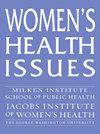贫困的心理和社会预测因素:女同性恋和双性恋女性之间的差异。
IF 2.5
2区 医学
Q2 PUBLIC, ENVIRONMENTAL & OCCUPATIONAL HEALTH
引用次数: 0
摘要
目的:研究表明,性少数群体比性多数群体更容易经历贫困,其中许多差异是由特定的性少数亚群体造成的,包括顺性双性恋女性。然而,人们对与经济不安全感相关的因素知之甚少,这些因素解释了性少数群体,特别是同性群体(即顺性双性恋与女同性恋女性)在经济结果上的群体内部差异。方法:我们使用美国全国非变性性少数成年人概率样本来评估贫困与人口统计学(年龄,种族/民族,教育),心理(心理困扰,自我接受,感觉耻辱和经历歧视)和社会(公开性,伴侣和父母地位,伴侣性别和性别表达)特征之间的关系,女同性恋/男同性恋(n = 324)和双性恋(n = 355)。我们计算了与贫困相关的风险因素的优势比,并调整了从逻辑回归模型估计的优势比(AORs)。结果:种族/民族(即认同为黑人)和教育(即拥有高中文凭或更低)与两个群体的贫困生活有关。少数族裔的压力因素,如外出、日常歧视和内化的同性恋恐惧症,并不能强烈地预测任何一个群体的贫困。然而,据报道,与性取向和男性化性别表达相关的耻辱经历与女同性恋者的贫困有关,而与双性恋女性无关;生孩子是双性恋女性贫困的有力预测指标,而与女同性恋无关。结论:这些研究结果表明,政策、宣传和服务干预措施应该考虑采用不同的方法来解决双性恋和女同性恋妇女的贫困问题。本文章由计算机程序翻译,如有差异,请以英文原文为准。
Psychological and Social Predictors of Poverty: Differences Between Lesbian and Bisexual Women
Purpose
Research has demonstrated that sexual minority populations are more likely to experience poverty than sexual majority populations and that many of these disparities are driven by specific sexual minority subgroups, including cisgender bisexual women. Yet, little is known about the factors associated with economic insecurity that explain the intragroup differences in economic outcomes among sexual minorities, particularly among those of the same gender (i.e., cisgender bisexual vs. lesbian women).
Methods
We used a U.S. national probability sample of non-transgender sexual minority adults to assess the relationship between poverty and demographic (age, race/ethnicity, education), psychological (psychological distress, self-acceptance, felt stigma, and experienced discrimination), and social (outness, partnership and parental status, partner gender, and gender expression) characteristics for each subgroup of women, lesbian/gay (n = 324) and bisexual (n = 355). We calculated odds ratios and adjusted odds ratios (AORs) estimated from logistic regression models that relate risk factors to poverty.
Results
Race/ethnicity (i.e., identifying as Black) and education (i.e., having a high school diploma or less) were associated with living in poverty for both groups. The role of minority stressors, such as outness, everyday discrimination, and internalized homophobia did not strongly predict poverty for either group. However, reports of experienced stigma related to one's sexual orientation and masculine gender expression were associated with poverty among lesbians but not for bisexual women, and having children was a strong predictor of poverty for bisexual women but not lesbians.
Conclusions
These findings suggest that policy, advocacy, and service interventions should consider tailoring approaches to address poverty for bisexual and lesbian women differently.
求助全文
通过发布文献求助,成功后即可免费获取论文全文。
去求助
来源期刊

Womens Health Issues
Multiple-
CiteScore
4.50
自引率
6.20%
发文量
97
审稿时长
32 days
期刊介绍:
Women"s Health Issues (WHI) is a peer-reviewed, bimonthly, multidisciplinary journal that publishes research and review manuscripts related to women"s health care and policy. As the official journal of the Jacobs Institute of Women"s Health, it is dedicated to improving the health and health care of all women throughout the lifespan and in diverse communities. The journal seeks to inform health services researchers, health care and public health professionals, social scientists, policymakers, and others concerned with women"s health.
 求助内容:
求助内容: 应助结果提醒方式:
应助结果提醒方式:


